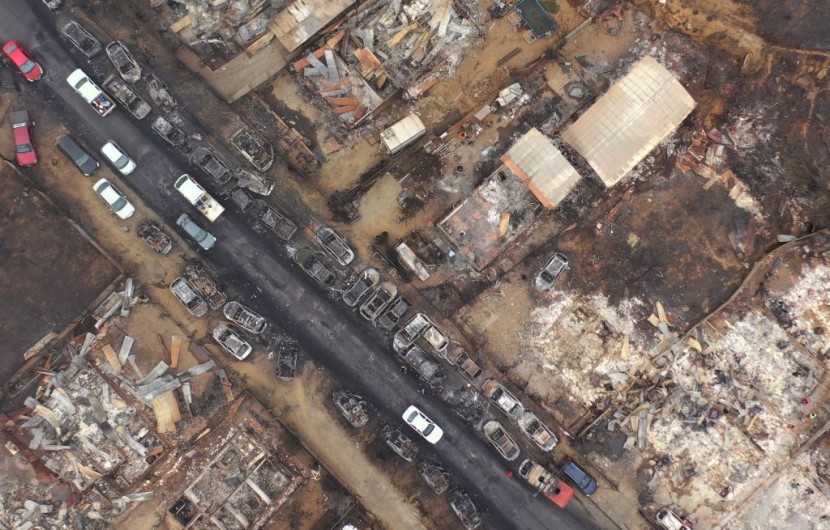Tragic wildfires in Chile have claimed the lives of over 100 people, with officials expressing concern that the number of casualties might increase.
So far, 112 people have perished, according to Chile's National Disaster Prevention and Response Service (SENAPRED) on Sunday, February 4. Reportedly, there have been 32 body identifications, 38 autopsies, and 10 corpses that are ready to be given to families.

Large-Scale Wildfires
Over the weekend, images and video from news agencies revealed the destruction that the fires had inflicted on several villages. Some residences were turned to ash, while scores of cars were reduced to shells in aerial photos taken from the El Olivar community. Fires engulfed the city of Valparaíso, too. SENAPRED said that there are 161 active fires nationwide at the moment.
In a report by CNN, SENAPRED Director álvaro Hormazábal said that firefighters had put out 102 of the flames, but they are still fighting 40 others. Hormazábal also said that 19 wildfires are being monitored at the moment.
Viña del Mar and Valparaiso, two coastal towns engulfed in smoke, were among the places President Gabriel Boric proclaimed a state of emergency. Central area residents were also ordered to leave their houses.
Firefighters in Chile are focusing on the port city of Valparaíso as a top priority because of its closeness to cities. There were 372 reported missing residents, according to local authorities.
After touring the disaster zones on Sunday, Boric spoke at a news conference, expressing concern that the death toll might "increase significantly."
Boric said on Saturday, February 3, via a televised statement that more military forces will be sent to the impacted regions by the defense ministry, along with all the supplies that are needed.
In honor of those lost in the fires, he proclaimed Monday and Tuesday (February 5 and 6) to be national days of mourning.
Global Warming
Heatwaves and wildfires are becoming more common as a result of global warming, which experts attribute to climate change and the El Niño weather phenomena.
An increasing number of wildfires throughout the world serve as a sobering reminder of the devastating impact of the climate issue, which is causing billions of dollars in damage annually and upending lives. Plus, analysts say things will only get worse from here on out.
A 2022 study by the United Nations Environment Program stated: "Uncontrollable and devastating wildfires are becoming an expected part of the seasonal calendars in many parts of the world."
The UN predicts that by 2030, there will be a 14% rise in the frequency of severe wildfires. The spike will reach 30% by the year 2050.








